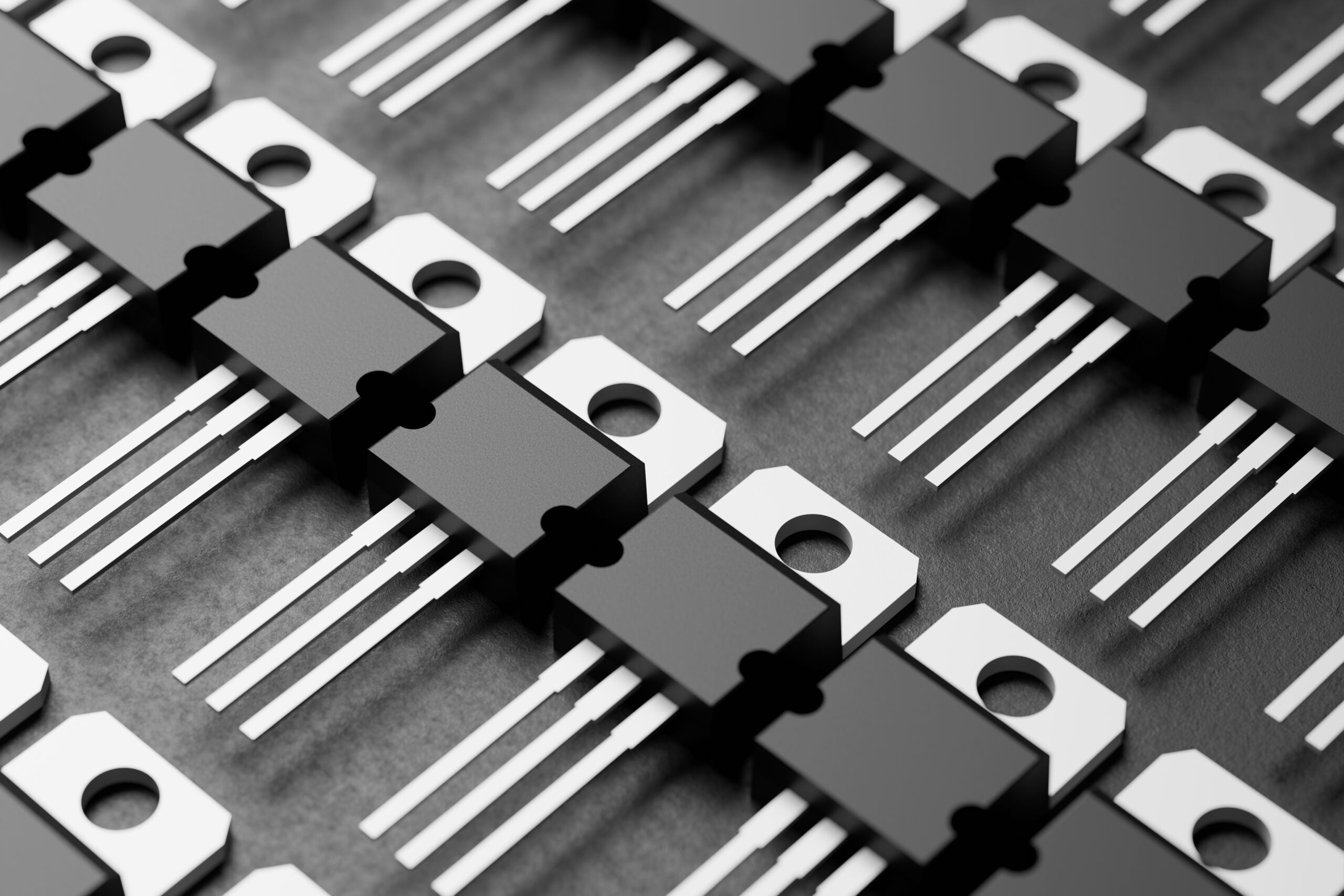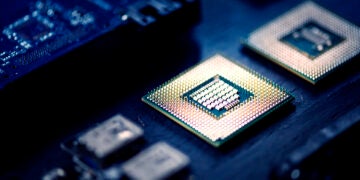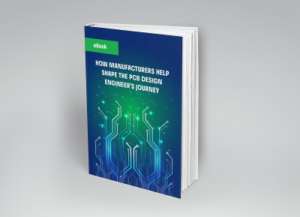
Knowing the benefits and differences of GaN vs SiC vs Si allows you to make the best selection for your semiconductor
Today, selecting the best components for your design involves considering the materials that define semiconductor performance. Modern semiconductor technology has evolved beyond traditional silicon (Si) to include advanced wide bandgap materials, like gallium nitride (GaN) and silicon carbide (SiC). As engineers design increasingly sophisticated power electronics, understanding the fundamental differences between these three semiconductor materials becomes crucial for selecting the optimal components.
Comparing GaN vs SiC vs Si Semiconductor Materials
Not that long ago, silicon was virtually the only viable semiconductor material choice. Those days are over. Today, when choosing the best device for your design, consider all three leading options: GaN vs SiC vs Si. Doing so requires an understanding of the differences in properties and typical applications, as listed below.
| GaN vs SiC vs Si Comparison | |||
| Property | Silicon (Si) | Silicon Carbide (SiC) | Gallium Nitride (GaN) |
| Energy Band Gap | 1.1 eV | 3.2-3.3 eV | 3.4 eV |
| Temperature Sensitivity | 150°C max operating | 200°C+ operating range | 200°C+ operating range |
| Electrical Conductivity | 1,450 cm²/V·s (electron mobility) | 650-900 cm²/V·s (electron mobility) | 1,500-2,000 cm²/V·s (electron mobility) |
| Thermal Conductivity | 150 W/m·K | 490 W/m·K | 130 W/m·K |
| N-Type Doping Capability | Excellent (phosphorus, arsenic) | Good (nitrogen) | Excellent (silicon) |
| P-Type Doping Capability | Excellent (boron) | Challenging (aluminum) | Difficult (magnesium) |
| Electron Mobility | 1,450 cm²/V·s | 650-900 cm²/V·s | 1,500-2,000 cm²/V·s |
| Relative Cost | Low (baseline) | Medium-High (3-5x Si) | High (5-10x Si) |
| Availability | Excellent | Good | Growing |
| Best Applications | General-purpose electronics, low-power devices | High-power, high-temperature applications | High-frequency, high-efficiency power conversion |
Silicon (Si): The Established Foundation
Silicon remains the cornerstone of semiconductor technology, offering several key advantages over wide bandgap alternatives. Its mature manufacturing ecosystem provides unmatched cost-effectiveness and component availability, making it ideal for high-volume applications where cost optimization is paramount.
Silicon Advantages Compared to GaN and SiC
- Manufacturing Maturity: Silicon benefits from decades of process optimization, resulting in highly refined fabrication techniques and exceptional yield rates. This maturity translates to consistent quality and predictable performance characteristics across a diverse range of operating conditions.
- Superior P-Type Doping: Unlike GaN and SiC, silicon readily accepts p-type dopants, like boron, which enables efficient complementary device structures. This characteristic proves essential for CMOS logic applications where both n-type and p-type devices must perform optimally within the same circuit.
- Cost Effectiveness: Silicon’s abundant raw material availability and established supply chain infrastructure maintain its position as the most economical semiconductor option. For applications not requiring extreme operating conditions, silicon’s cost advantage often outweighs the performance benefits of wide bandgap materials.
- Design Ecosystem: It is essential to employ essential design guidelines to maximize the effectiveness of your Si components and PCBs.
Silicon Carbide (SiC): High-Power Performance Leader
Silicon carbide emerges as the preferred choice for demanding power electronics applications, particularly where high temperature operation and superior thermal management are critical. SiC’s wide 3.2-3.3 eV bandgap enables operation at voltages and temperatures that would destroy silicon devices.
SiC Advantages Compared to GaN and Si
- Superior Thermal Management: SiC’s thermal conductivity of 490 W/m·K significantly exceeds both silicon (150 W/m·K) and GaN (130 W/m·K), enabling more effective heat dissipation in high-power applications. This thermal advantage allows for more compact designs with smaller heat sinks and cooling systems.
- High-Voltage Capability: SiC devices routinely operate at voltages exceeding 1,200V, with some applications reaching 6,500V or higher. This voltage handling capability surpasses silicon’s typical 600V limit and exceeds GaN’s practical voltage range in most commercial applications.
- Temperature Resilience: SiC maintains stable performance characteristics at junction temperatures exceeding 200°C, compared to silicon’s 150°C limit. This temperature tolerance proves invaluable in automotive, industrial, and aerospace applications where ambient temperatures and power dissipation create challenging operating conditions.
- Mature Wide Bandgap Technology: Among wide bandgap semiconductors, SiC technology has achieved greater manufacturing maturity compared to GaN, resulting in better availability and more predictable supply chains. Many top semiconductor manufacturers have established robust SiC production capabilities.
Gallium Nitride (GaN): High-Frequency Innovation
Gallium nitride represents the cutting edge of semiconductor technology, offering exceptional electron mobility and switching performance that enable revolutionary advances in power conversion efficiency and frequency response.
GaN Advantages Compared to SiC and Si
- Exceptional Electron Mobility: GaN’s electron mobility of 1,500-2,000 cm²/V·s significantly exceeds that of SiC (650-900 cm²/V·s) and approaches the levels of silicon while maintaining a much wider bandgap. This high mobility enables faster switching speeds and reduced conduction losses.
- Superior Switching Performance: GaN devices achieve switching frequencies in the MHz range with minimal losses, compared to kHz-range operation typical of silicon and SiC devices. This high-frequency capability enables dramatic reductions in passive component size, particularly inductors and capacitors in switch-mode power supplies.
- Power Density Advantages: The combination of high switching frequency and efficient power conversion allows GaN-based designs to achieve power densities 3-5 times higher than those of silicon equivalents. This advantage proves particularly valuable in applications where size and weight constraints are critical.
- Integration Capabilities: GaN technology enables monolithic integration of power devices with control circuitry, as demonstrated by components like the Texas Instruments LMG3622REQR available in Ultra Librarian’s component library. This 650V GaN FET integrates driver, protection, and current sensing functions in a single package.

TI LMG3622REQR GaN field-effect transistor (FET)
Optimizing Your Semiconductor Selection
When selecting the best semiconductor and deciding between GaN, SiC, and Si for your project, consider these critical selection criteria:
Criterion for Choosing Between GaN vs SiC vs Si
|
The semiconductor material selection process should also account for the broader system requirements, including thermal management capabilities, electromagnetic interference considerations, and long-term reliability requirements. Ultra Librarian’s comprehensive component database provides access to manufacturer-verified models for components across all three material categories, enabling accurate design simulation and validation.
If you’re looking for CAD models for common components or important GaN vs SiC vs Si semiconductor material comparison information, Ultra Librarian helps by compiling all your sourcing and CAD information in one place.
Working with Ultra Librarian sets up your team for success to ensure streamlined and error-free design, production, and sourcing. Register today for free.








